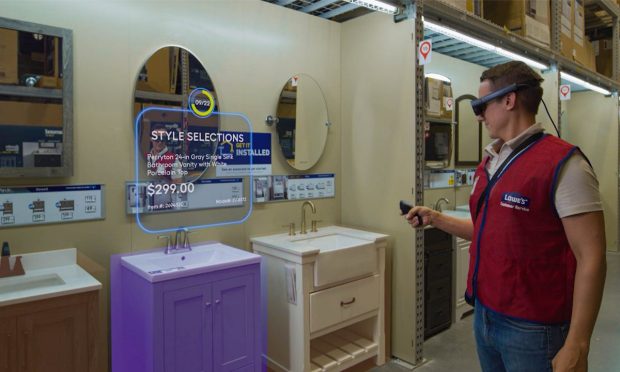Lowe’s Brings Digital Twins to World of Home Improvement

Lowe’s has unveiled what it calls its industry’s first “interactive digital store twin,” the home improvement chain said in a press release Tuesday (Sept. 20).
Debuting at technology firm Nvidia’s GTC conference, the “digital twin showcases a future in which store associates can visualize and interact with nearly all of a store’s digital data, giving them superpowers to optimize operations and localize plans to better serve customer needs.”
As PYMNTS has noted, a digital twin is a digital version of a real-world item. That can mean something like a non-fungible token (NFT) of a pair of Nikes to the brick-for-brick virtual replica of Christie’s New Bond Street, London auction house in Decentraland.
In the coming weeks, Lowe’s will open up a portion of its virtual 3D product catalog — used to populate its digital twin — to users of Nvidia’s Omniverse virtual world, helping “them create new possibilities in their applications for retail and beyond.”
See also: NVIDIA Makes Its Omniverse Free to Creators
The offering was built by Lowe’s Innovation Labs team, and the company said digital twin is now live in two stores. Per the release, it offers a virtual replica of a physical home improvement store that melds spatial data with other Lowe’s data, including product location and historical order information, creating a visual package that can be accessed from a variety of devices.
“AI and digital twins are reinventing the retail experience for associates and customers, in person and online,” said Jensen Huang, founder and CEO of Nvidia. “Lowe’s, with Omniverse and AI, is at the forefront of shaping this future retail experience.”
Some of the areas Lowe’s is exploring with the digital twin include augmented reality (AR) reset and restocking support, which lets workers — wearing an AR headset — see a hologram of the digital twin overlaid with the physical store in AR.
“This can help an associate compare what a store shelf should look like versus what it actually looks like, and make sure it’s stocked with the right products in the right configurations,” the company said.
Learn more: Walmart Upgrades Virtual Try-on Experience as Retail Fitting Tech Scales
While Lowe’s virtual store concept might be new to the world of home improvement, PYMNTS research has found that some consumers want VR shopping options.
The “How We Will Pay” study, conducted with Visa, found that interest began spiking during the pandemic, with more than 30% of consumers saying they were either very or extremely interested in virtual simulation of clothing fit. Additionally, 1.6% of respondents said they were using this technology to shop.
For all PYMNTS retail coverage, subscribe to the daily Retail Newsletter.
